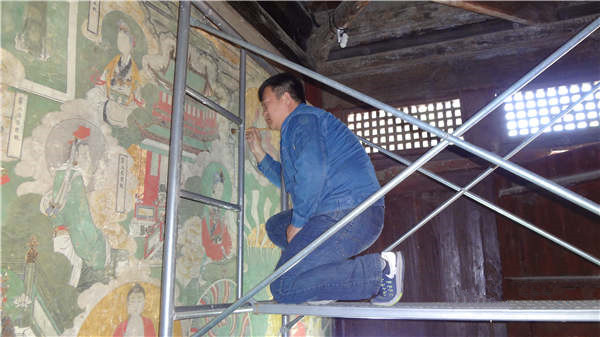 |
|
Veteran fresco restorer Li Yunhe's grandson Li Xiaoyang works on fresco restoration. |
"I knew I would work in China when I was abroad," he says. "Though returning to Dunhuang was not my first option, there was nothing bad about inheriting my family's career."
He joined the restoration team in 2011 and started with basic work like making mud (to restore the wall) or cutting wheat straw (to mix it with the mud later). Both are fundamental materials in restoration.
"An experienced restorer will immediately know how sticky or how moist the mud needs to be. I'm still practicing," he says. "My masters will judge whether my formula is OK. If it is not, I will keep adjusting until it fits. The job hones my patience."
Their family gatherings or dinners can easily turn into academic seminars on restoration. The grandfather will get angry if the younger Li seems to forget something he's been taught.
Li Xiaoyang notes that identical materials of the original walls are required in restoration. If some parts of the frescoes fall down and break into small pieces, restorers will put them back together, but redrawing is not allowed on the parts being eroded over time.
"Restoration is complicated and extremely demanding for each process," Li Xiaoyang says. "However, we don't adopt models like that of an assembly line, where each worker is in charge of one process."
He says a qualified restorer should be capable of doing every step-and make sure the project can continue when someone is absent. "I'm a carpenter. I'm a bricklayer. I'm an electric technician as well," he says and smiles.